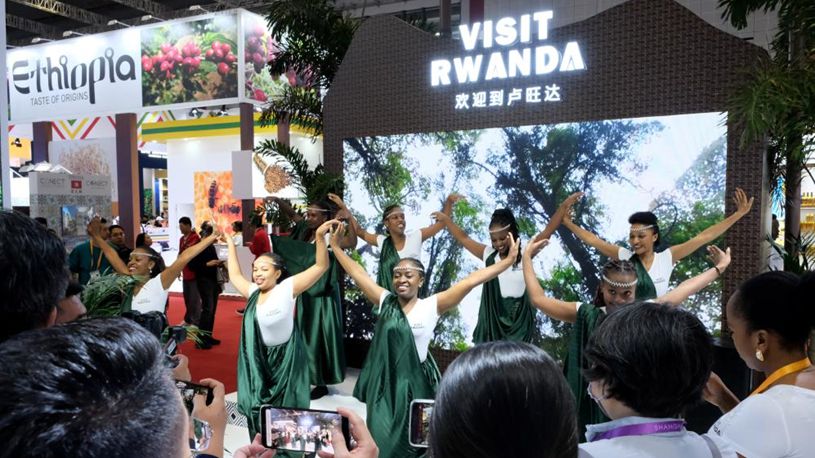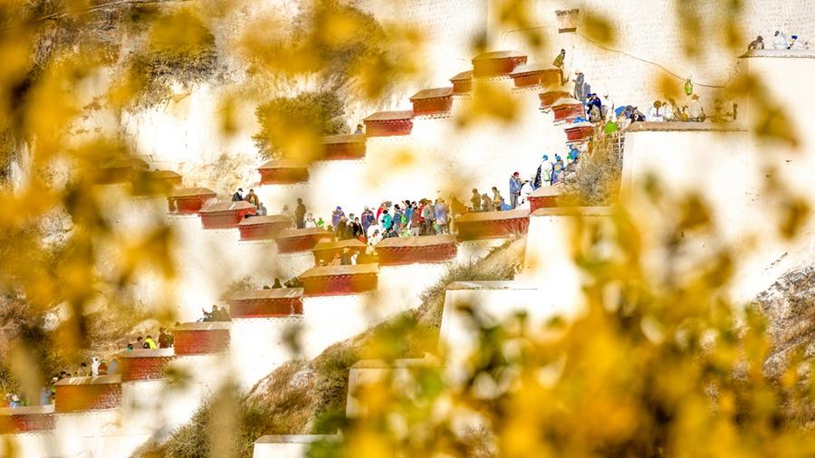BEIJING, Nov. 7 (Xinhua) -- At an exhibition on the origins of Chinese civilization held in the Chinese Archaeological Museum in Beijing, Konstantinos Buraselis from Greece listened very intently to the guide. He frequently paused to appreciate the artifacts on display and often joined in discussions with other visitors.
As he reached the section about the Liangzhu ruins, a UNESCO World Heritage site in Zhejiang Province that bears witness to the existence of Chinese civilization over 5,000 years ago, he became extremely interested and asked the guide for more details.
"Last year, I was invited to attend Liangzhu Forum, and I was very much amazed by the civilization thousands of years ago just like the Aegean Civilization around the same period back in Greece," said the emeritus professor of ancient history at the National and Kapodistrian University of Athens.
The exhibition tour on Wednesday was one of the activities for the first World Conference of Classics, which opened on Thursday.
Themed "Classical Civilizations and the Modern World," the event seeks to provide a platform for classical civilization researchers and specialists to trace the origins of human thought, draw insights from history and explore the traditions of human civilization through the lens of classical studies.
The event is co-organized by the Chinese Academy of Social Sciences, the Ministry of Education of China, the Ministry of Culture and Tourism of China, the Ministry of Culture of Greece, and the Academy of Athens.
Among the more than 400 participants are over 180 international guests from well-known universities, think tanks and research institutions from countries including the United States, Britain, Greece, Japan, Argentina and Australia.
Prior to their arrival in Beijing, many foreign delegates attending the event split into several groups to visit museums, ancient ruins and other sites in the provinces of Henan, Sichuan and Shandong. These cultural tours offered them a fascinating glimpse into the rich history of ancient Chinese civilization.
Tobias Hirsch, a post-doctorate at the University of Technology Nuremberg, Germany, was impressed by the Erlitou relics site, which was identified by archaeologists as one of the capital cities during the Xia Dynasty (2070 BC-1600 BC) in central China's Henan Province.
"The Erlitou site was important because before, I perceived the Xia Dynasty as more or less a mere construct, and now I've seen with my own eyes the site and it was really impressive," he said.
During his tour in Chengdu, capital of southwest China's Sichuan Province, Patrick Finglass, a professor of Greek at the University of Bristol in Britain, found it interesting that some archaeological artifacts excavated at the city's Jinsha ruins have become cultural icons of Chengdu.
He noticed that the image of the "Sun and Immortal Birds," a disc-shaped gold ornament crafted during the Shang and Zhou dynasties (1600 BC-256 BC), is often spotted on road lamps and other facilities in the city.
"That's really beautiful how the city of Chengdu has incorporated that item within," said Finglass, adding that it was very special seeing the image in different contexts, indicating the ancient material has been made part of the modern city.
He also found that the image of the golden mask uncovered at the ruins is commonly seen throughout the city.
Jinsha ruins, together with the Sanxingdui ruins, are peaks of ancient Shu culture and represent the two most glorious periods of the ancient Shu Kingdom that suddenly disappeared about 2,000 years ago.
Before leaving Henan Museum, Antonia Trichopoulou from the Academy of Athens, Greece, bought a replica of a 9,000-year-old bone flute at the souvenir shop. Through the flute as well as bells displayed in the museum, she saw how much the ancient Chinese people enjoyed music and played an important role in its development.
"I think that this is not an achievement of your population. It's an achievement of humankind that so early they discovered the value of music. So, it does not belong only to you, it belongs to humanity," she said.
Scholars believe that this trip to China has provided them with a more intuitive understanding of ancient Chinese civilization. They are also looking forward to trans-cultural exchanges with a wide range of topics such as the practical significance of classical studies in the modern world at the conference, which will conclude on Friday. ■











